I want to read a bunch of factor data and create a transition matrix from it that I can visualise nicely. I found a very sweet package, called 'heemod' which, together with 'diagram' does a decent job.
For my first quick-and-dirty approach, a ran a piece of Python code to get to the matrix, then used this R sniplet to draw the graph. Note that the transition probabilities come from that undisclosed and less important Python code, but you can also just assume that I calculated it on paper.
library('heemod')
library('diagram')
mat_dim <- define_transition(
state_names = c('State_A', 'State_B', 'State_C'),
.18, .73, .09,
.22, .0, .78,
.58, .08, .33);
plot(mat_dim)
However, I would like to integrate all in R and generate the transition matrix and the graph within R and from the sequence data directly.
This is what I have so far:
library(markovchain)
library('heemod')
library('diagram')
# the data --- this is normally read from a file
data = c(1,2,1,1,1,2,3,1,3,1,2,3,1,2,1,2,3,3,3,1,2,3,2,3,1,2,3,3,1,2,3,3,1)
fdata = factor(data)
rdata = factor(data,labels=c("State_A","State_B","State_C"))
# create transition matrix
dimMatrix = createSequenceMatrix(rdata, toRowProbs = TRUE)
dimMatrix
QUESTION: how can I transfer dimMatrix so that define_transition can process it?
mat_dim <- define_transition( ??? );
plot(mat_dim)
Any ideas? Are there better/easier solutions?

